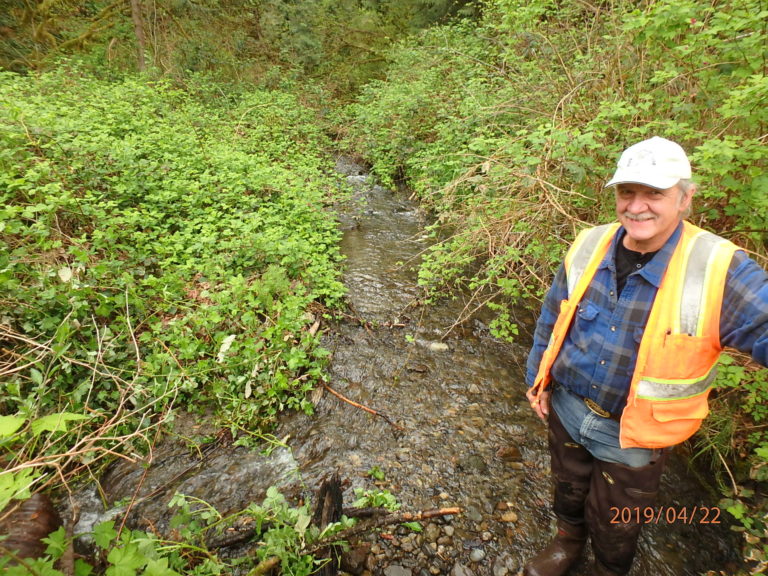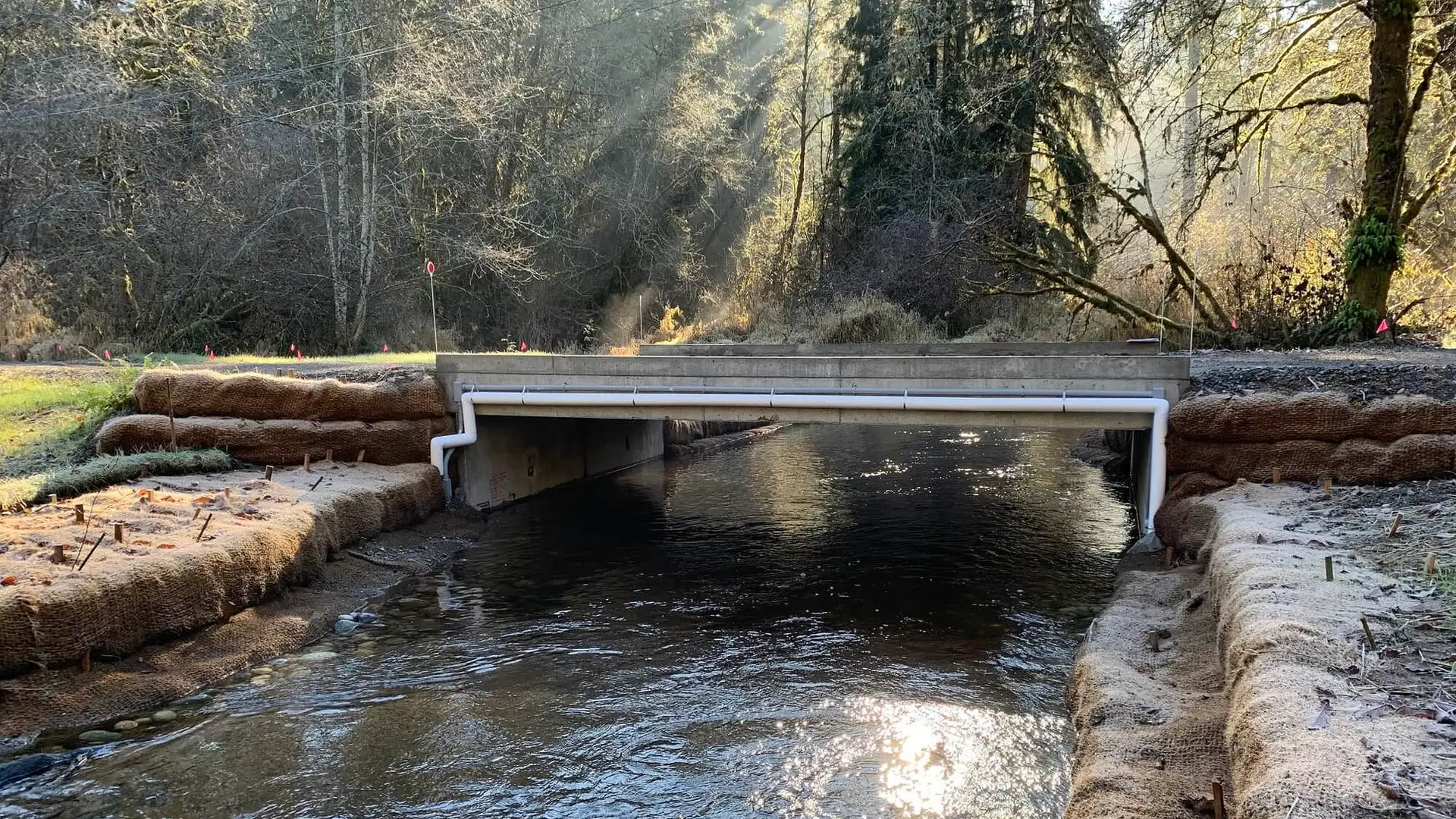

The project area included a section Harris Creek, tributary to the Snoqualmie River in western Washington State, where a partial barrier culvert blocked 5.43 miles of vital upstream spawning and rearing habitat for coho, cutthroat, bull trout, and steelhead. By interrupting habitat connectivity, even a single barrier can have a disproportionately large impact on the abundance and resiliency of wild fish populations.
Man-made barriers to fish migration have significant impacts on wild fish; limiting distribution, reducing access to spawning and rearing habitats, and disrupting the spatial habitat complexity historically available to fish populations. Whether for resident species that spend their entire lives in one watershed, or migratory species that travel thousands of miles, instream barriers compromise a populations’ ability to weather environmental uncertainties. Evolutionary fitness of the entire population is weakened when barriers restrict gene flow, creating small, isolated sub-groups that can suffer from inbreeding.
The Family Forest Fish Passage Program (FFFPP) assists private forestland owners in removing culverts and other stream crossing structures that prevent ESA listed salmonids from migrating upstream. Through the management of the Department of Natural Resources Washington State Recreation and Conservation Office some 376 landowners have taken advantage of the program to remove 433 barriers since 2003.
This project removed an undersized culvert which crossed under a private forest land road. The culvert was 67% passable and was replaced with an 18-foot long, 15-foot wide, 7-foot high concrete box culvert.
Location | Start Date |
|---|---|
Harris Creek, tributary to the Snoqualmie River, in the Snoqualmie River Basin, western Washington State | 06/06/2017 |
Project Type | Completion Date |
|---|---|
Fish Passage | 01/15/2020 |
The goal of this project was to improve access to both upstream and downstream habitat for salmonids in Harris Creek to increase fish populations in this watershed. This will be accomplished by replacing an existing fish passage barrier with a new structure that provides unimpeded passage to both upstream and downstream habitat.
Primary Habitats Impacted By Project: | Managing Agency/ Organization: |
|---|---|
Riparian Stream Channels | Washington State Recreation and Conservation Office |
Project Contact: | Budget or Project Cost: |
|---|---|
Jamie Glasgow | $151,744.00 |
Funding Sources: | Partners: |
|---|---|
Family Forest Fish Passage Grants | Landowner Cathy Collins |
Join our mailing list to recieve important updates on our work, the latest wild fish news, & opportunities to take action to support wild fish.
This site is protected by reCAPTCHA and the Google Privacy Policy and Terms of Service apply.
Wild Fish Conservancy is recognized as a 501(c)3 non-profit by the IRS